Marktstr. 44
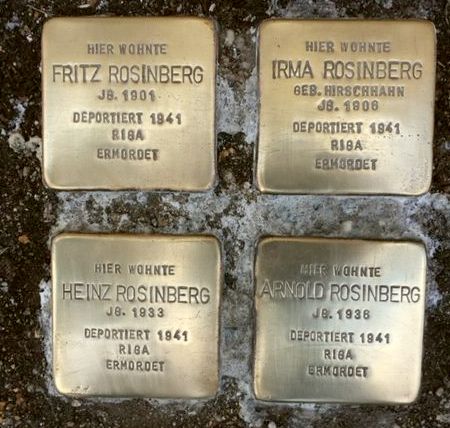
Moving from Breslau
Fritz Laib Rosinberg was born in Slonin, Lithuania, in July 1901. He soon stopped using his Jewish first name Laib and only called himself Fritz. Irma, née Hirschhahn, Fritz’s wife was born on 16 August1906 in Hamborn near Duisburg, where her father Salomon Hirschhahn ran a shop for manufactured goods at least in 1907. Irma’s mother Jenny, born Leopold, came from Krojanke in what was then West Prussia. Whether Irma had siblings could not be clarified. It is also unclear how and where Fritz and Irma met, but in any case they were married in Breslau in 1929. A short time later, the newlyweds moved to Göppingen and opened a clothing shop here. At first they sold men’s outerwear at Kellereistraße 8, but in 1932 they moved to Geislingerstraße 26 – Kreuzung / Untere Marktstraße, where they took over the clothing shop of Hermann Rust, a Stuttgart resident.
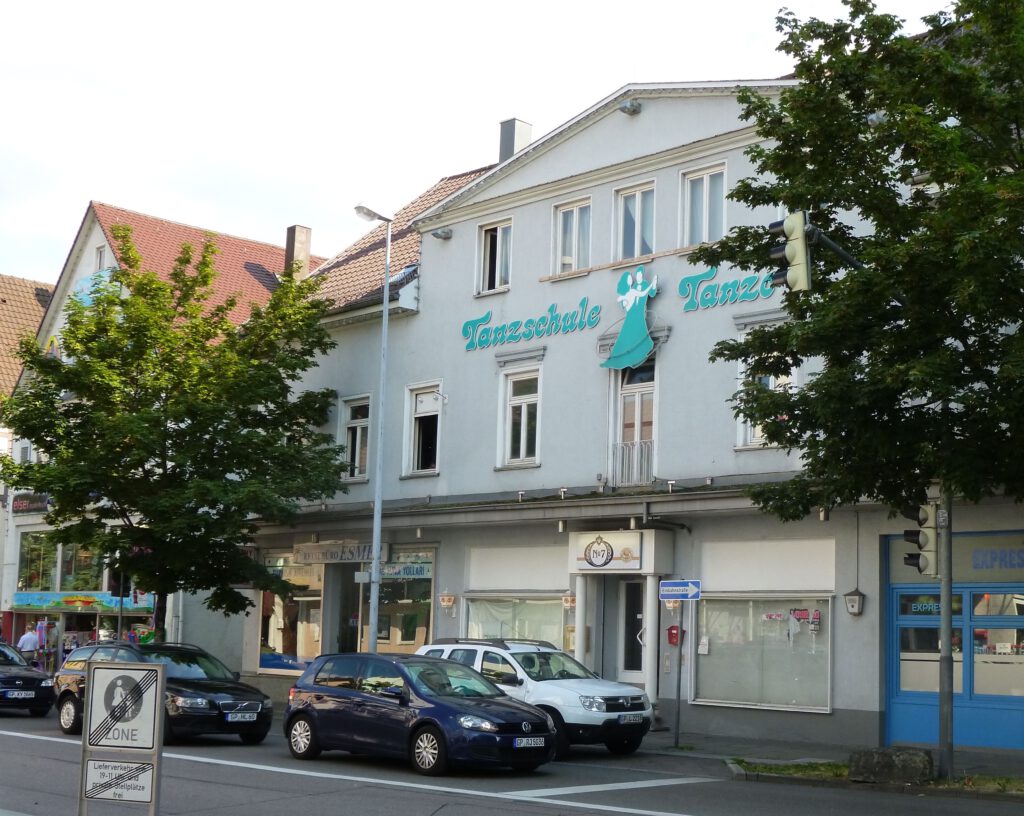
However, the rented business premises and the shop fittings belonged to the Huttenlocher family, known in Göppingen as cinema operators. The business had not brought its previous owner any luck and if one follows the statements in the later restitution proceedings, Fritz Rosinberg also got into an economic plight before the Nazi period, which even led him to misbehave with his suppliers.
SA (Nazi Storm Trooper) Sentries and Happiness at Becoming Parents
On 1 April 1933, all Jewish shops in Germany were marked by the SA and were to be boycotted. Non-Jews were urged: “Do not buy from Jews”. The call had an effect and initiated the economic decline of many businesses; at Rosinbergs the already difficult situation may have been further aggravated. A photo shows two SA ‘brown shirts’ standing in front of the shop with proudly puffed out chests.
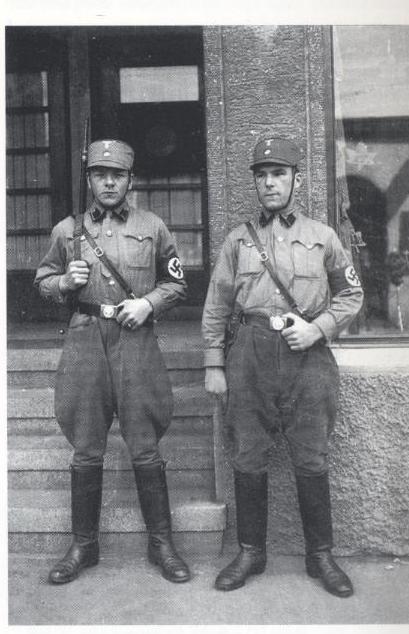
The ‘gleichgeschaltete’ (i.e. brought into line) ‘Göppinger Zeitung’ also contributed to destroying the family’s economic existence. In its issue of 30 July 1935 it writes: ‘The Jew Rosinberg, owner of the Rosinberg clothing store located at Untere Markt Straße, thought that he could offer his seasonal sales merchandise through advertisements just as it might be customary in Galicia or Palestine‘. The ‘advertising pictures’ were probably window dressing; Mr Rosinberg had no money for expensive newspaper advertisements.
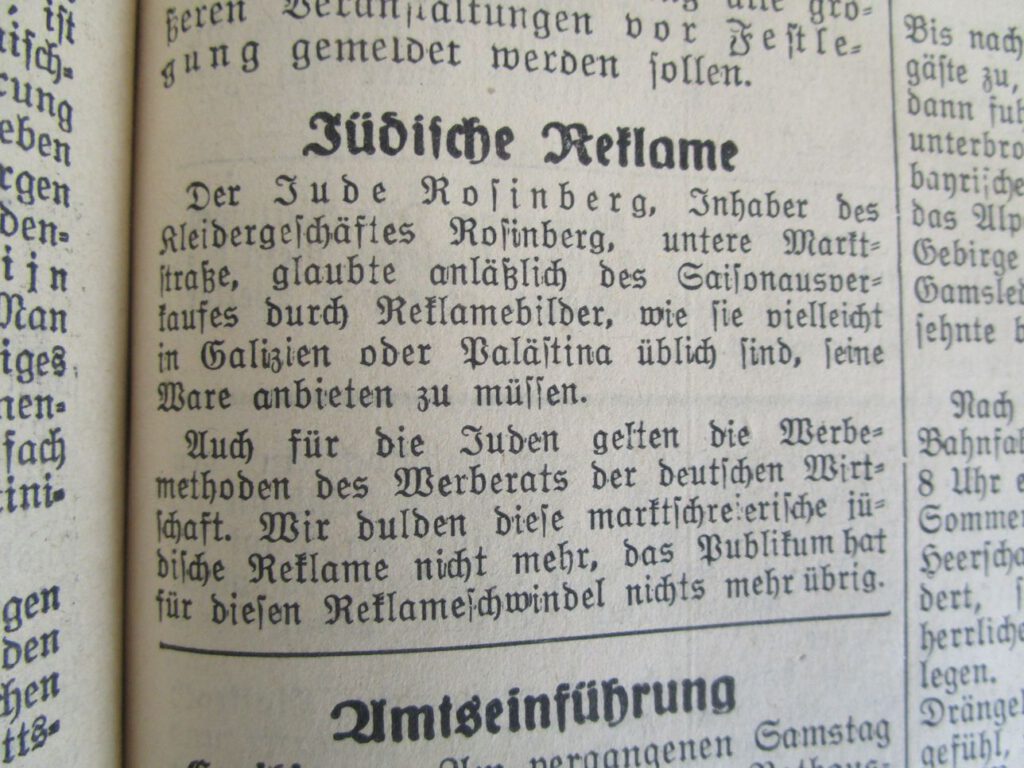
In the middle of the obviously increasingly threatening times, in October 1933, the first child, Heinz Rosinberg, was born in Göppingen. Three years later, in May 1936, his brother Arnold was born. At that time, the family lived in Marktstraße 44 for rent. The house belonged to the ‘private owner’ Paul Mayer, but even then it was known as the restaurant ‘Zum Reben’, the landlord was the master baker Hugo Gut.
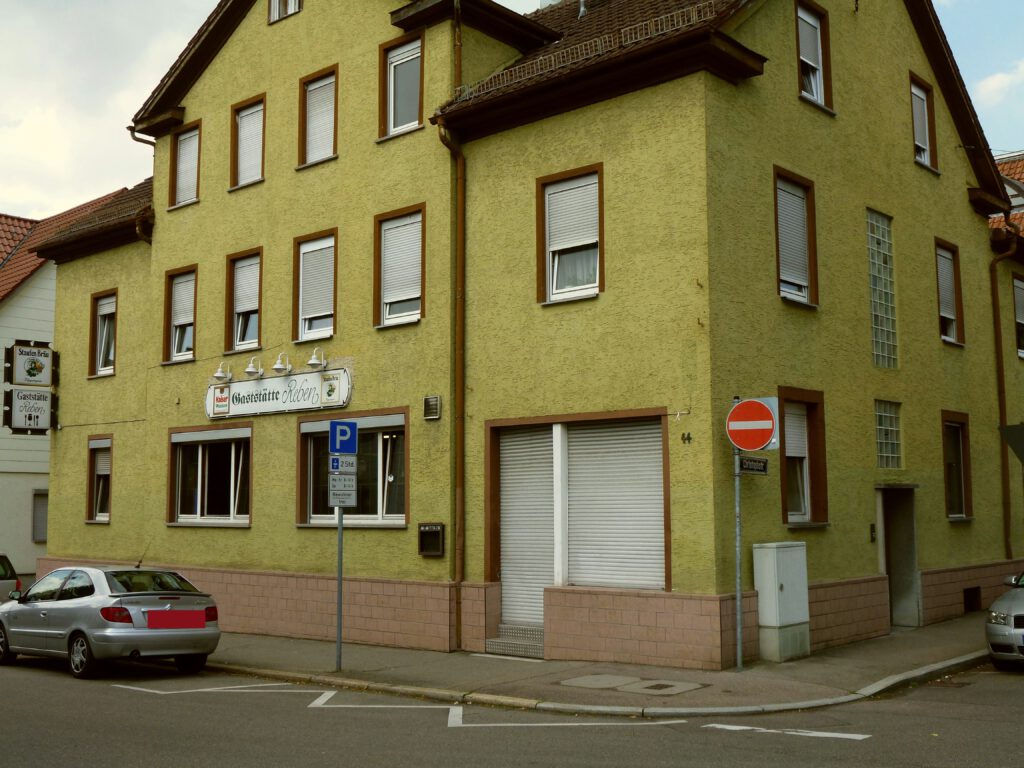
In the Göppingen address book of 1937, the residential address of the Rosinberg family is given as Christophstraße 39, but it is not known why the move took place. Perhaps the previous apartment was too small for the family, which had now grown to four people.
Economic Problems
The family’s economic situation must have continued to change for the worse over the years. It was not possible to move the stock, ‘shopworn goods’ accumulated and Fritz Rosinberg tried to sell the goods as a pedlar, sometimes below the purchase price. Out of necessity, the Rosinbergs decided to sell the shop to Friedrich Fauser on 16 May 1938. The price paid for the goods and the inventory was RM 10,348.25. Mr. Rosinberg had to use a large part of this, namely RM 8526.24, to pay off suppliers’ debts.
After the war, the former ‘Jewish’ property that Friedrich Fauser had acquired during the Nazi era was also judged. A file from 1951 shows that no members of the Rosinberg / Hischhahn family entitled to restitution could be found or had registered. The Jewish Restitution Successor Organisation took their place. Lydia Fauser, the widow of the buyer, was able to prove that neither she nor her husband had been members of a Nazi organisation. It also spoke in her favour that the purchase had taken place before the Pogrom Night. During the restitution proceedings, Mrs Fauser was even appointed trustee of the transaction and the settlement ended with her having to pay a relatively small compensation amount to the JRSO.
Terror of the Pogrom Night – Move to a ‘Jewish House’
In the pogrom night of 9/10 November 1938, the Rosinberg family was also terrorised: Fritz Rosinberg was one of the Goeppingers who were first arrested and later tortured in the Dachau concentration camp. He had to hold out there from 12 November to 22 December. In the same year, the family probably moved away from Christophstraße, because from the end of 1938 they lived in Geislingerstraße 6, a house that belonged to the Jewish Dörzbacher family. (see Stolperstein biography Julius Regensburger). During this time, Irma’s widowed mother Jenny Hirschhahn also moved to Göppingen. According to the registration card, she lived “with Mrs. Rosinberg” at Geislingerstraße 6.
If the move to Geislingerstraße could perhaps still be understood as a voluntary choice, this was certainly not the case for the next one, as the family had to move into the ‘Jewish house’ at Metzgerstraße 16, which belonged to the Geschmay couple.
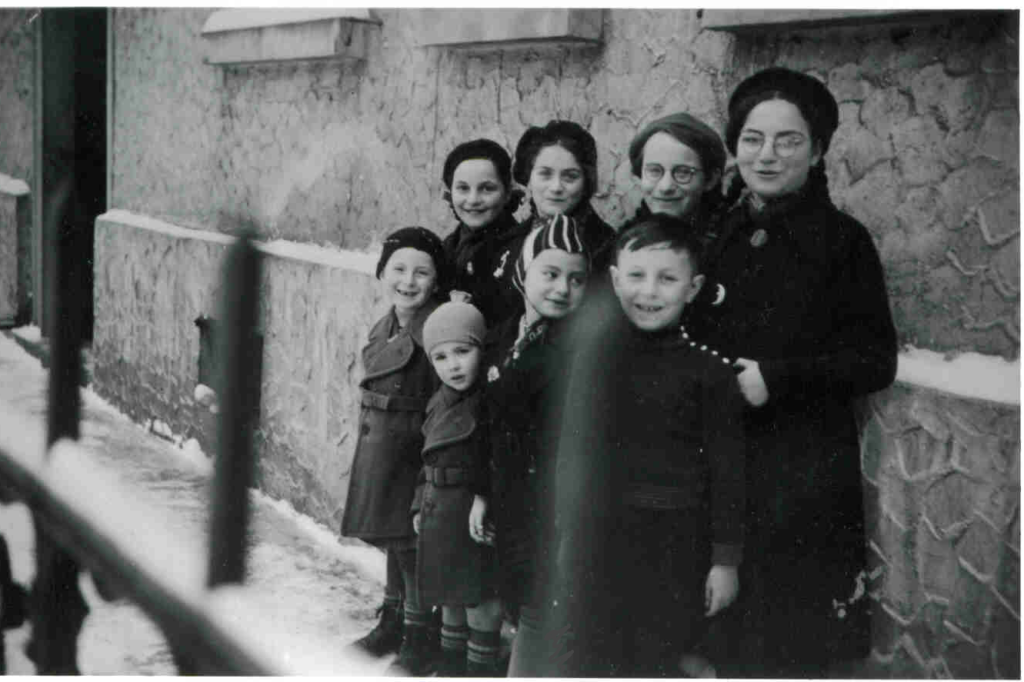
In the middle: Inge Auerbacher (with striped cap)
The children’s photo was taken in front of this house at the end of 1941, in which the contemporary witness Inge Auerbacher was able to identify her playmates Heinz and Arnold. The photo was taken by Inge’s father Berthold Auerbacher. Presumably a few days after the photo was taken, Jewish citizens were forced to hand over their cameras to the Nazi authorities.
The Murder of the Family
On 28 November 1941, the Rosinberg family was expelled from the town. The destination of the deportation was the Riga / Jungfernhof camp. The train rolled out of Stuttgart’s Nordbahnhof station on 1 December. How did they fare? Did they arrive at the camp alive? Was the cruel transport already fatal? How bad was the rip through the souls of the little boys? Were parents and their children able to stay together until the end or were they torn away from each other? Did they have to dig their own grave before they were shot, or did they collapse during marches? Did they freeze to death, starve to death, suffocate? And how heavy was the parents’ fear for their children, the fear of death?
Jenny Hirschhahn, the grandmother of Arnold and Heinz, was taken to Riga on the same deportation train as the Rosinberg family, where she too was murdered.
In April 2008 Gunter Demnig laid Stumbling Stones for Arnold, Heinz, Fritz and Irma Rosinberg in front of the house at Marktstraße 44.
This text is based in part on an article by Andrea Maier in Göppingen’s NWZ newspaper.
(07.05.2023 kmr)


Kann es sein, das die Verlegung im April 2007 (statt wie hier angegeben 2008) war?
Auf stolpersteine.eu ist für April 2008 keine Verlegung in Göppingen angegeben